February 28, 2019
One of the most dramatic changes made by the Tax Cuts and Jobs Act enacted in December 2017 was the creation of a new 20% qualified business income ("QBI") deduction under new Section 199A of the Internal Revenue Code (the "Code"). This new provision generally permits the owners of pass-through businesses, such as sole proprietorships, partnerships, limited liability companies and S corporations, to deduct up to 20% of their share of the business’s qualified business income in determining their personal U.S. federal income tax liability. In general, for years beginning after December 31, 2017 and before January 1, 2026, taxpayers (other than C corporations) are permitted to take a QBI deduction equal to the lesser of:
- 20% of the taxpayer’s aggregate QBI with respect to the taxpayer’s qualified trades or businesses for the taxable year, or
- 20% of the taxpayer’s taxable income over the taxpayer’s net capital gains for the taxable year.
The QBI deduction for taxpayers with taxable incomes above a certain threshold amount is further limited based on the greater of:
- 50% of the taxpayer’s share of W-2 wages paid by the qualified trade or business, or
- The sum of (i) 25% of the taxpayer’s share of W-2 wages paid by the qualified trade or business and (ii) 2.5% of the unadjusted basis immediately after acquisition of qualified property of the qualified trade or business.
On January 18, 2019, the IRS released final regulations (the "Final Regulations") that offer definitive guidance on the application of certain provisions of Code Section 199A and modify several provisions originally included in the Code Section 199A proposed regulations issued in August 2018. The following is a summary of some of the important areas in which the Final Regulations provide new or clarifying guidance:
Definition of "Qualified Business Income" and "Net Capital Gains": Qualified business income generally excludes certain types of investment income such as capital gains. The Final Regulations clarify that capital gains include not only actual capital gains, but also any income items treated as capital gains under any provision of the Code (e.g., net Code Section 1231 gains). The Final Regulations also clarify that "net capital gains" for purposes of the taxable income limitation also include qualified dividends.
Rental Real Estate as a Trade or Business: Both the proposed and Final Regulations expand the definition of trade or business for purposes of Code Section 199A to include the rental of tangible or intangible property to a commonly controlled business (at least 50%). Because significant uncertainty exists regarding the trade or business treatment of rental real estate activities that are not conducted within a commonly controlled business, the preamble to the Final Regulations identifies a number of factors to consider in making this determination including: (1) the type of rented property (e.g., commercial versus residential), (2) the number of properties rented, (3) the owner’s or their agent’s day-to-day involvement, (4) the types and significance of any ancillary services provided under the lease, and (5) the terms of the lease (e.g., net lease versus traditional lease; short-term versus long-term lease).
In addition, on the same date the Final Regulations were published, the IRS published Notice 2019-17 that proposes a safe harbor under which a rental real estate business will be treated as a trade or business for Code Section 199A purposes. Importantly, triple net leases and property used as a residence during the year do not qualify for the safe harbor. Further, failure to meet the safe harbor does not automatically mean that the rental real estate activity is not a Code Section 199A trade or business if the facts and circumstances prove otherwise.
Unadjusted Basis Immediately After Acquisition (UBIA): The Final Regulations make a number of changes to the proposed regulations regarding the computation of UBIA including:
- The UBIA of property contributed to a partnership or corporation in a nonrecognition transaction is generally the same as the transferor’s UBIA in the property;
- The UBIA of replacement property received in a like-kind exchange under Code Section 1031 generally equals the UBIA of the relinquished property. A similar rule applies for property received in an involuntary conversion under Code Section 1033.
- If a Code Section 754 election is in effect, the Final Regulations treat the basis adjustment that occurs upon the death of a partner or sale of a partnership interest as qualified property to the extent the adjustment reflects an increase in fair market value of the property over the original UBIA of the property.
Aggregation: Under the proposed regulations, individual owners were permitted to aggregate multiple trades or businesses for purposes of computing QBI, wages and UBIA provided certain requirements were met. The Final Regulations expand this rule to permit pass-through entities to elect to aggregate businesses that are operated directly or through lower-tier pass-through entities. This election is binding on the owners of the pass-through entity but the owners can aggregate additional trades or businesses with the underlying group provided the requirements for aggregation are met.
The Final Regulations also make it clear that the common ownership (at least 50% common ownership) requirement that must satisfied with respect to the businesses to be aggregated must exist on the last day of the taxable year (as well as for a majority of the taxable year) and that common ownership includes both direct ownership and indirect ownership by attribution (e.g., from siblings, from trusts having the same grantors, and between a trust and beneficiaries of the trust). With an understanding that taxpayers may have been confused by the aggregation rules in the proposed regulations, the Final Regulations permit an
aggregation election to be made with an amended return for the 2018 tax year only.
Previously Disallowed Losses: Consistent with the proposed regulations, the Final Regulations require previously disallowed or suspended losses (e.g., passive activity losses, at-risk losses and losses suspended under the partnership and S-corporation adjusted basis limitations) to be taken into account in computing QBI as long as the losses are incurred in tax years beginning on or after January 1, 2018. However, the Final Regulations add an ordering rule for these losses stating that these losses are to be taken into account on a first-in, first-out (i.e., FIFO) basis for purposes of computing QBI.
Trade or Business of Being an Employee: Both the proposed and Final Regulations include the presumption that an individual who was previously treated as an employee and is subsequently treated as other than an employee while performing substantially the same services to the same person (or related person) will be presumed to be an employee. The Final Regulations add that this presumption continues for three years following the change in classification unless the individual can rebut this presumption by showing records (e.g., contracts or partnership agreements) that corroborate the individual’s status as a non-employee for federal employment taxes.
Mixed Businesses Including Specified Service Trade or Business ("SSTB"): The proposed regulations included a "cliff" provision pursuant to which a separate business that would not be treated as an SSTB if viewed independently would automatically be treated as an SSTB if it shared common ownership with an SSTB (at least 50%) and provided at least 80% of its property or services to the SSTB. The IRS softened this position in the Final Regulations which provide that only the income generated from providing products or services to the commonly owned SSTB is treated as SSTB income. Therefore, for example, if 85% of the separate non-SSTB business’s income is generated from providing products or services to a commonly owned SSTB, the remaining 15% of the separate business’s income can qualify for the QBI deduction.
SSTB De Minimis Rule: The proposed regulations provided that if a separate trade or business (1) was commonly owned with an SSTB, (2) shared expenses with the SSTB and (3) accounted for no more than 5% of the combined gross receipts, the separate business was treated as part of the SSTB. The Final Regulations eliminate this "de minimis" rule which means that a truly separate trade or business should not be aggregated with a commonly controlled SSTB, even if the businesses share expenses.
The Final Regulations do adopt the rule in the proposed regulations that a trade or business with gross receipts in excess of $25 million will be treated as an SSTB if at least 5% of the gross receipts are generated from an SSTB (or 10% if the trade or business has gross receipts of $25 million or less). Therefore, when multiple businesses exist, it is imperative to document the separate activities of the non-SSTB business to avoid meeting the 5% or 10% thresholds. This can be accomplished through such actions as keeping separate books and records, having separate employees and using separate accounting for each business.
Trusts: The Final Regulations make a number of changes and clarifications with respect to trusts, including:
- The S and non-S portion of electing small business trusts ("ESBTs") are treated as one trust for purposes of determining the threshold amount and permitted QBI deduction;
- The anti-abuse language in the proposed regulations that denied the QBI deduction to any trust formed or funded with a significant purpose of receiving a QBI deduction has been changed to "a principal purpose of avoiding, or of using more than one, threshold amount."
- The taxable income of a trust is determined after the distribution deduction for purposes of determining if the trust’s taxable income has exceeded the threshold amount.
The Final Regulations will apply to taxable years ending after the date of publication in the Federal Register. With certain exceptions, the preamble to the Final Regulations states that a taxpayer may rely on either the proposed regulations or the Final Regulations in their entirety for taxable years ending in 2018.
The Final Regulations provide welcome and helpful guidance for business owners on a number of open questions raised following the enactment of Code Section 199A and the issuance of the proposed regulations. Unfortunately, the Final Regulations also leave a number of unanswered questions for taxpayers who may be eligible for the 20% QBI deduction, such as whether a qualified trade or business exists. The rules for obtaining the deduction are extremely complex and will require careful and comprehensive planning to obtain the maximum benefit.
If you have any questions regarding the QBI deduction, how the Final Regulations might affect your business, and/or any potential tax planning opportunities that are available under Section 199A, please contact Marc T. Finer, Tax Partner, at
860-240-6096 or mfiner@murthalaw.com.
![]() tax_irs_issues_initial_guidance_on_20_pass_through_entity_deduction.pdf
tax_irs_issues_initial_guidance_on_20_pass_through_entity_deduction.pdf

